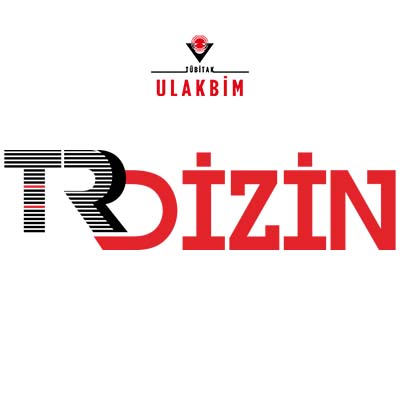Can Alternative Tourism Heal the Wounds of the February 6 Earthquake in Göksun (Kahramanmaraş)?
DOI:
https://doi.org/10.63556/ankad.v9i2.222Keywords:
Alternative Tourism, Natural and Cultural Resource Values, Göksun, Kahramanmaraş.Abstract
Abstract
Today, the tendency towards alternative tourism types has increased in order to reduce the natural, cultural, and environmental problems caused by mass tourism, to benefit from tourism revenues all year round, and to use resources effectively. This situation creates a chance for underdeveloped countries/regions/cities. The study was conducted in Göksun district, which is an important place with its historical/natural/cultural elements. Göksun was both materially and morally affected by the Kahramanmaraş-based earthquakes, which were expressed as the disaster of the century on February 6, 2023, and migration from the region became inevitable. The aim of the study is to examine the alternative tourism potential of the region from a holistic perspective, to determine its strengths/weaknesses and opportunities/threats, and to put forward suggestions on the usability of tourism for the recovery of the region after the earthquake. Göksun’s mountains, rivers, plateaus, karakucak wrestling, festivals, historical and cultural values, tradition of minstrelsy, local Circassian food have been identified as alternative tourism offerings. The strongest aspect of the region is that nature is untouched and tourism can be sustained over 12 months, while the weakest aspect is that the earthquake concern continues. While the fact that the industry does not pose a danger to natural values is an opportunity, the fact that tourism is not sufficiently known by the local people and the decrease in the young population due to migration pose a threat. Göksun is a place where alternative tourism such as trekking, rock climbing, rafting, paragliding, mountain biking, bird watching, sports, cave, adventure, hunting, creative and cultural tourism can be practiced. In order to utilize this potential, all stakeholders must act together in the region.
References
Acar, V., ve Karaosmanoğlu, K. (2019). Çerkes mutfak kültürünü deneyimlemeye yönelik bir tur önerisi: Düzce ili örneği. International Journal of Contemporary Tourism Research, 3(2), 177-197.
Arismayanti, N. K., Sendra, I. M., Suwena, I. K., Budiarsa, M., Bakta, I. M.; Pitana, I. G. (2019). Tourism villages’ development in Bali, mass or alternative tourism. Journal of Tourism and Hospitality Management, 7(2), 117-139.
Ateljevic, I. Morgan, N.; Pritchard, A. (2007). The Critical Turn in Tourism Studies, London: Routledge.
AFAD, (2023). 06 Şubat 2023 Pazarcık (Kahramanmaraş) Mw 7.7 Elbistan (Kahramanmaraş) Mw 7.6 depremlerine ilişkin ön değerlendirme raporu. (Erişim Tarihi: 29.09.2023).
Alaeddinoğlu, F. (2017). Türkiye’de Turizmin Gelişimi ve Alternatif Turizm Arayışları. Pegem Atıf İndeksi, 205-220
Alaeddinoğlu, F., ve Can, A. S. (2011). Identification and classification of nature-based tourism resources: Western Lake Van basin, Turkey. Procedia-Social and Behavioral Sciences, 19, 198-207.
Bahar, O. ve Çelik İlal, N. (2020). Coronavirüsün (Covid-19) Turizm Sektörü Üzerindeki Ekonomik Etkileri, International Journal of Social Sciences and Education Research, 6(1). 125-139.
Baytok, A., Pelit, E.; Soybalı, H. H. (2017). Alternatif turizm mi turizmde çeşitlilik mi? Kavramsal bir değerlendirme. Erzincan Üniversitesi Sosyal Bilimler Enstitüsü Dergisi, 1-14.
Biricik, A. S. ve Korkmaz, H. (2001). Kahramanmaraş’ın depremselliği. Marmara Coğrafya Dergisi, (3), 53-82.
Çepni, S. (2010). Araştırma ve Proje Çalışmalarına Giriş, 5. Baskı. Trabzon
Ceylan, S., Çetin, A.; Özdipçiner, N. S. (2019). Alternatif Turizm Türleri ile İlgili Bir Literatür Taraması, In 4. The International Symposium on Innovative Approaches in Social, Human and AdministrativeSciences, Samsun, 4: 227-230.
Cheia, G. (2013). Ecotourism: Definition and Concepts. Journal of Tourism, (15): 56-60.
Choe, J. Y. ve Kim, S. S. (2018), Effects of Tourists’ Local Food Consumption Value on Attitude, Food Destination Image, and Behavioral Intention, International Journal of Hospitality Management, 71, s. 1-10.
Cuculeski, N., Petrovska, I., & Petkovska Mircevska, T. (2015). Emerging Trends in Tourism: Need for Alternative Forms in Macedonian Tourism. Review of Innovation and Competitiveness: A journal of Economic and Social Research, 1(1), 103-114.
Dinç, A. ve Karekök, H. (2021). Türkiye’de ekoturizm alanında yapılan lisansüstü tezlerin incelenmesi (2000-2020). Journal of Humanities and Tourism Research, 11(1), 241-255.
Ei, T., ve Karamanis, K. (2017). The Evolution of Alternative Forms of Tourism: A Theoretical Background. Business & Entrepreneurship Journal, 6(1), 1-4.
Eyicil, A (2010). “Göksun Tarihi”, 100. Yılında Göksun Sempozyumu, İstanbul 2010, s.47-63.
Jordan, E. J., Spencer, D. M.; Prayag, G. (2019). Tourism Impacts, Emotions and Stress, Annals of Tourism Research, 75: 213-226
Kervankıran, İ. (2011). Afyonkarahisar İlinde Alternatif Tarım Çalışmalarına Bir Örnek: Jeotermal Seracılık. Marmara Coğrafya Dergisi, (24), 382-402.
Kılıçsallayan, S. (2021). Rota Maraş, Göksun İlçesi, Akbaba Ofset Matbaacılık Basım Yayın Dağıtım, Tanıtım. S:76- 83, Kahramanmaraş
Toroğlu, E., Karademir, N.; Bayhan, Ü. B. (2014). “Berit Dağlarında Yaylacılık (Göksun-Kahramanmaraş)”. Yayla Kültürü ve Yaylacılık Sempozyumu (6-7 Kasım 2014, Bilecik) Bildiri Özetleri, s:16, Bilecik.
TÜİK, (Türkiye İstatistik Kurumu), (2024). https://www.tuik.gov.tr/. (Erişim: 09.11.2024).
Kültür ve Turizm Bakanlığı. (2020). Türkiye turizm stratejisi (2023). https://yigm.ktb.gov.tr/TR-11699/turkiye -turizmstratejisi.html, Erişim tarihi: 02.10.2020.
Özhatay, N, (2006). Türkiye’nin BTC Boru Hattı Boyunca Önemli Bitki Alanları. BTC Şirketi.İstanbul.
Salawu, M. K. (2020). Tourism and economic growth in Afrıcan Largest Economy. Eurasian Journal of Economics and Finance, 8(2), 68-84.
Tekeli, M. ve Kırıcı Tekeli, E. (2020). Sustainable Gastronomic Tourism. F. Türkmen (Ed.), Selected Academic Studies from Turkish Tourism Sector içinde (ss.113-133). Belin: Peter Lang.
Ulusan, Y., ve Batman, O. (2010). Alternatif turizm çeşitlerinin Konya turizmine etkisi üzerine bir araştırma. Selçuk Üniversitesi Sosyal Bilimler Enstitüsü Dergisi, (23), 243-260.
Ülgen, H., ve Mirze, S. K. (2013). İşletmelerde Stratejik Yönetim. İstanbul: Beta.
URL-1 https://tr.climate-data.org. (Erişim Tarihi 19.11. 2024)
URL-2 https://kahramanmaras.ktb.gov.tr/(Erişim Tarihi 24.09. 2024)
URL-3 http://www.goksun.gov.tr/kultur-ve-turizm. (Erişim Tarihi 08.03. 2024)
URL-4 https://www.goksun.bel.tr/(Erişim Tarihi 12.10. 2024)
URL-5 https://tggf.org.tr/tggf-talimatlari/(Erişim Tarihi 19.03. 2024)
URL-6 https://festivall.com.tr/ilceler-fest/637/goksun/(Erişim Tarihi 11.06. 2024)
URL-7https://www.memlekettenhaber.com/kahramanmarasin-ciris-boregi-cografi-isaret-tescil-belgesi-aldi) (Erişim Tarihi 19.09. 2024)
URL-8 https://kahramanmaras.bel.tr/(Erişim Tarihi 09.08. 2024)
URL-9https://kahramanmaras.bel.tr/haber/2024/08/26/milli-sporcu-yusuf-dikec-agustos-fuarinda-hemsehrileriyle-bulustu) (Erişim Tarihi 13.10. 2024)
Yıldırım, A. ve Şimşek, H. (2016). Sosyal Bilimlerde Nitel Araştırma Yöntemleri. Ankara: Seçkin Yayıncılık
Downloads
Published
How to Cite
Issue
Section
License
Copyright (c) 2025 Journal of Anatolian Cultural Research (JANCR)

This work is licensed under a Creative Commons Attribution-NonCommercial 4.0 International License.










